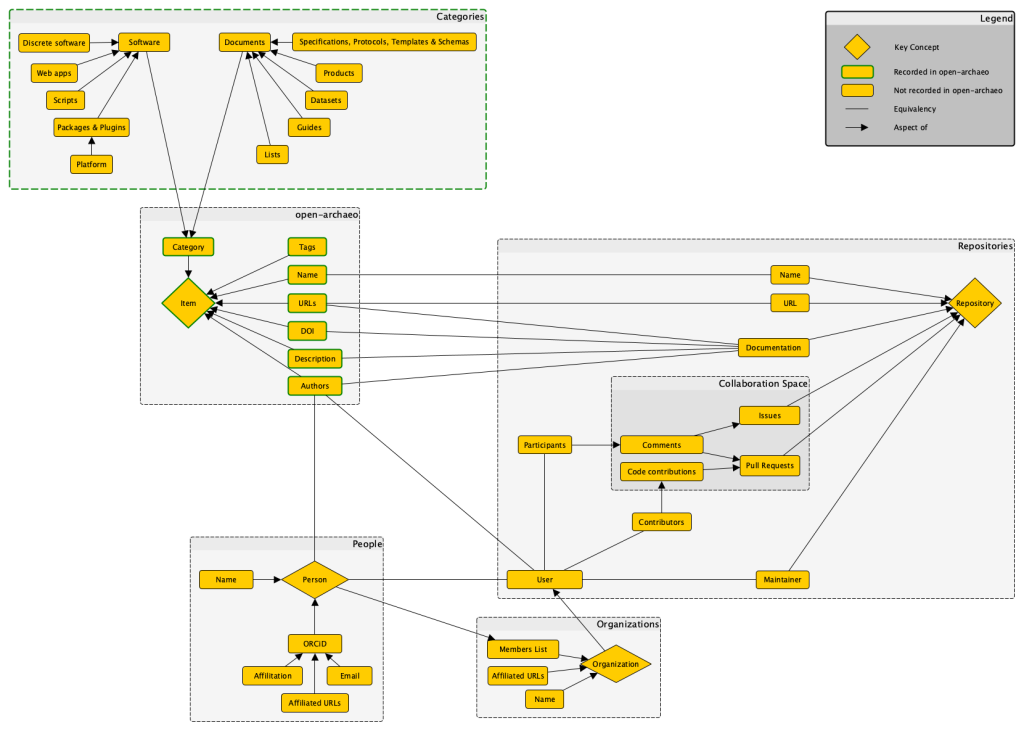I finally defended my doctoral dissertation a few weeks ago, and after 7 years I’m happy to put it out into the world: https://doi.org/10.5281/zenodo.8373390
To briefly summarize: I observed and interviewed archaeologists while they worked, focusing on how they collaborate to produce information commons within relatively small, bounded communities. I relate these observations to issues experienced when sharing data globally on the web using open data platforms. This is part of an effort to reorient data sharing (and other aspects of open science) as a social, collaborative, communicative, and commensal experience.
Many thanks to my supervisor, Costis Dallas, for being such a great mentor, and to Matt Ratto and Ted Banning for their constant constructive feedback. And special thanks to the external examiners, Jeremy Huggett and Ed Swenson, for critically engaging with my work.
Archaeological data work as continuous and collaborative practice
This dissertation critically examines the sociotechnical structures that archaeologists rely on to coordinate their research and manage their data. I frame data as discursive media that communicate archaeological encounters, which enable archaeologists to form productive collaboration relationships. All archaeological activities involve data work, as archaeologists simultaneously account for the decisions and circumstances that framed the information they rely on to perform their own practices, while anticipating how their information outputs will be used by others in the future. All archaeological activities are therefore loci of practical epistemic convergence, where meanings are negotiated in relation to communally-held objectives.
Through observations of and interviews with archaeologists at work, and analysis of the documents they produce, I articulate how data sharing relates distributed work experiences as part of a continuum of practice. I highlight the assumptions and value regimes that underlie the social and technical structures that support productive archaeological work, and draw attention to the inseparable relationship between the management of labour and data. I also relate this discursive view of data sharing to the open data movement, and suggest that it is necessary to develop new collaborative commitments pertaining to data publication and reuse that are more in line with disciplinary norms, expectations, and value regimes.
